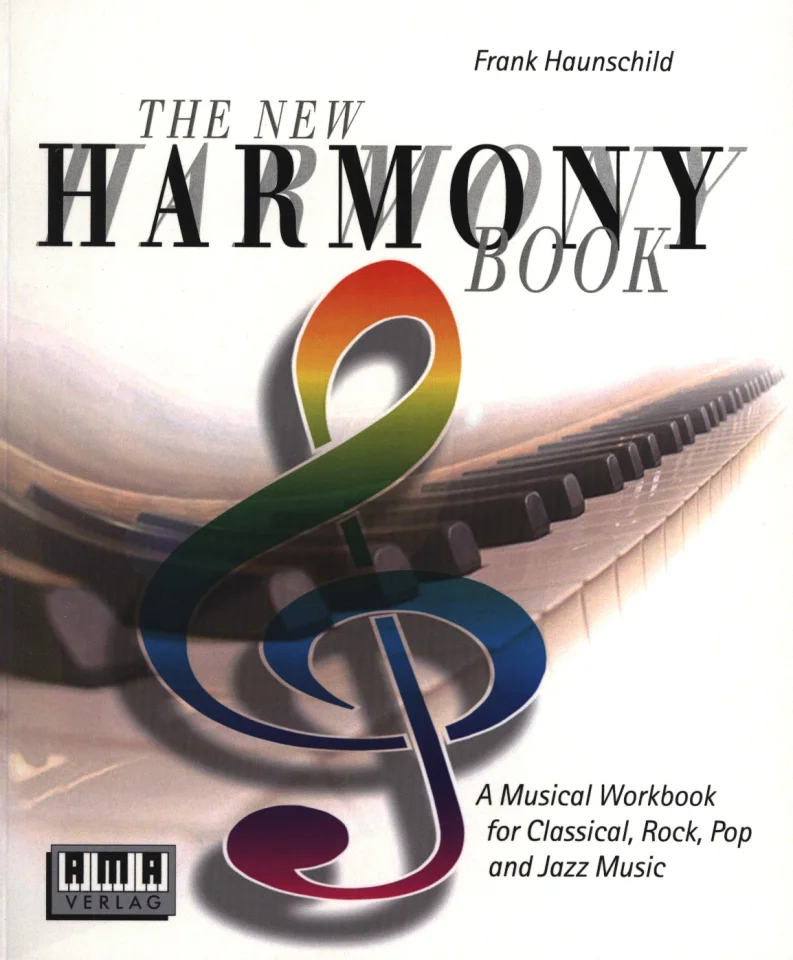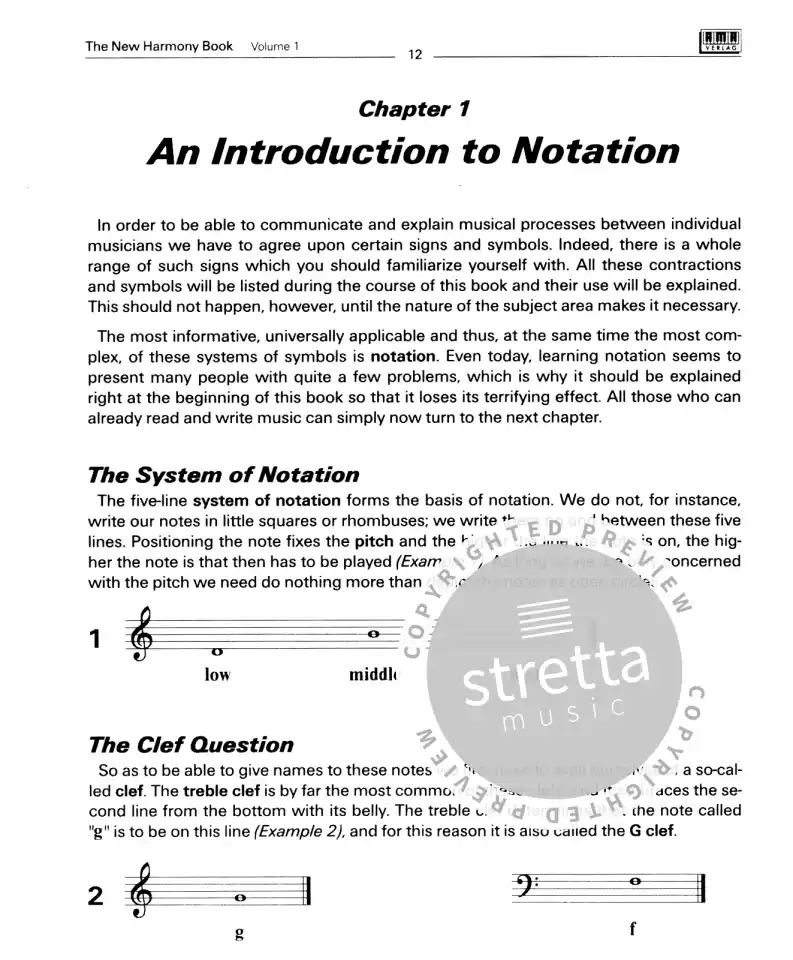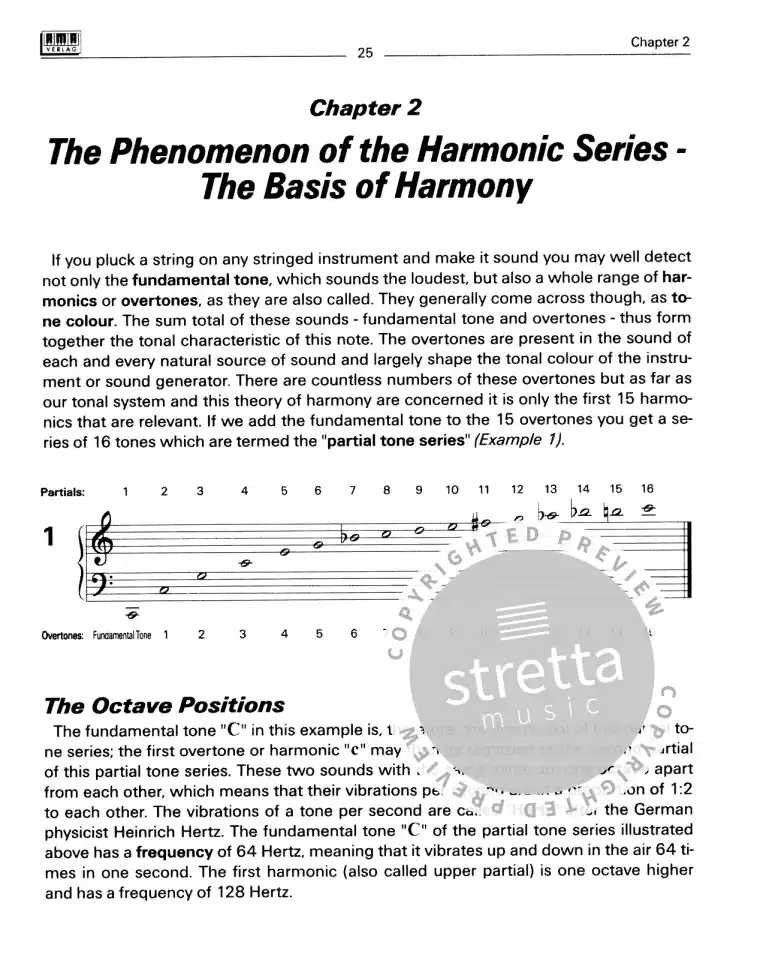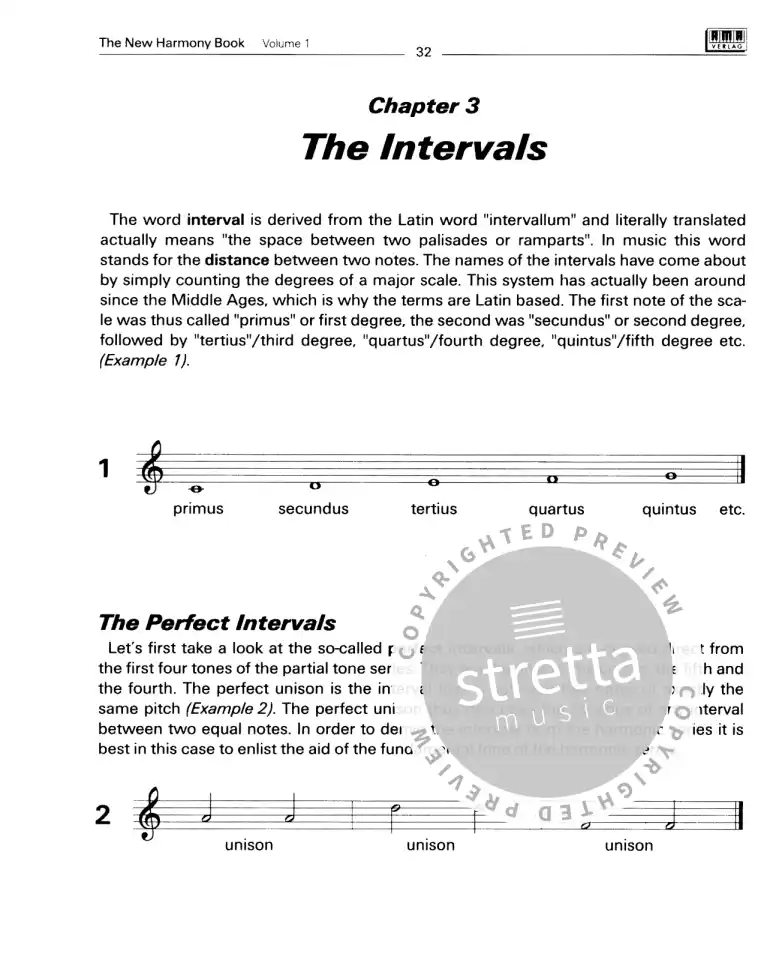Inhalt
- Preface
- Part I:
- The Tonal System
- Chapter 1: An introduction to notationThe system of notation
- The clef question
- The ABC of notesHalftones and whole tones
- The C major scaleAccidentals
- The twelve notes within an octaveFour-four time
- The time values of notes
- TripletsRest signs
- Dots and ties
- Other time signatures (metres)
- Expression marks
- Exercises
- Chapter 2:
- The phenomenon of the harmonic series - the basis of harmony
- The octave positions
- Frequency ratios and interval proportions
- The well-tempered tuning
- Exercises
- Part II:
- The Rudiments of Harmony
- Chapter 3:
- The intervals
- The perfect intervals
- Major and minor - diminished and augmented
- Table of intervalsThe tritone
- The use of enharmonic notes
- Beyond the octave
- Complementary intervals
- A few observations on ear training
- Consonance and dissonanceTheories of aural psychology
- The interval proportions
- Interval qualities in classical counterpoint
- The intervals in jazz
- Circles of intervals
- Exercises
- Chapter 4: The triads
- The four "basic" triads
- Triad inversions
- The first chord symbols
- The diatonic triads of a major scale
- Primary and secondary triads
- The classical terms of harmonic functionThe fifth relationship
- Function sand cadences
- Assigning the diatonic triads to the 3 functional areas
- The relationship between triads a third apart
- The diatonic relation shipThe half-tone relationship
- Symbols for triad inversions
- Triads with additional bass note
- Exercises
- Chapter 5:
- Four-note chords and their extensions
- The make-up and extension of four-note chords
- Symbols used to designate chords
- Two index systems
- 10 general rules for chord symbols
- The 7 main seventh chordsHow to decipher chord symbols
- How to put notes together to form a chord symbol
- Four-note chords as triads with an additional bass note
- Slash chordsThe diatonic seventh chords of a major scale
- The cadence of the diatonic seventh chords in fourths
- Chord synonyms
- Shortened four-note chords
- The relationships of four-note chords a third apart
- Half-tone related four-note chords
- Exercises
- Chapter 6: The lonian systemFrom the church modes to the lonian system
- Chords are scales - scales are chords
- A closed tonal systemScale structures
- Scale relationships
- The new orderThe "avoid notes"
- Exercises
- Chapter 7:
- The circle of fifths
- The relationship of the tetrachords
- From C major to G major
- The circle closesThe circle of fifths as the touchstone of relationships
- The diatonic chords in the circle of fifths
- The keys and their accidentalsThe circle of fourths
- The circle-of-fourths exercise
- Exercises
- Chapter 8:
- The harmonic minor scale
- The introduction of a leading note
- The dominant seventh chord in the minor cadence
- The oriental character of the harmonic minor scale
- The gypsy minor
- The harmonic minor as a closed scale system
- Naming the diatonic scales of the harmonic minor
- The common scales of this system
- Harmonic minor half-tone relationships
- Exercises
- Chapter 9:
- The melodic minor scale
- Evening out the tonal leapThe melodic minor in classical and in modern music
- The melodic minor scale systemNaming the diatonic scales of the melodic minor
- Re-interpreting the VIIth degree
- From super locrian to altered
- Melodic minor half-tone relationships
- The 4 principle minor keys
- Exercises
- Chapter 10:
- A general survey of other scales
- 1 The pentatonic scalesMajor and minor pentatonic scalesThe pentatonic scale in jazz
- Altered pentatonic scales
- Indian and Japanese pentatonic scales
- 2 The scales in the blues
- The minor pentatonic scale as the first blues scale
- The minor pentatonic scale with the b5 (minor blues scale)
- The blues scaleThe phenomenon of the "blue notes"
- 3 The symmetrical scales
- The whole-tone scale
- The chromatic scale
- Half-tone-whole-tone and whole-tone-half-tone scales
- The half-tone-whole-tone scaleThe whole-tone-half-tone scale
- Further possibilities
- 4 Composite scales
- Exercises
- Chapter 11:
- The harmonic




